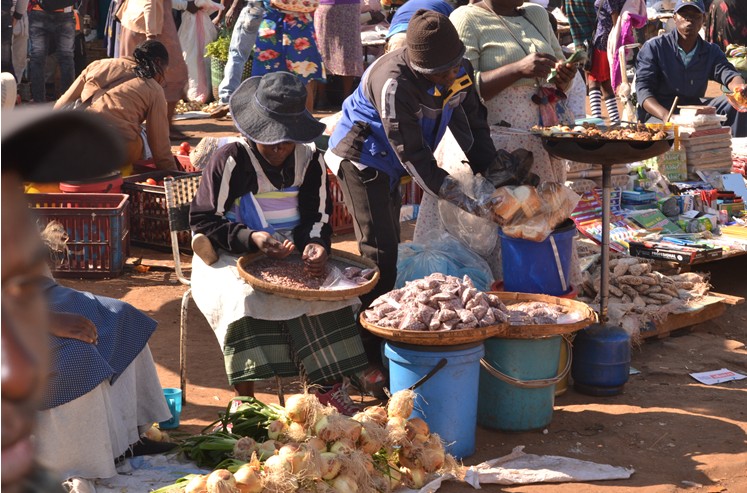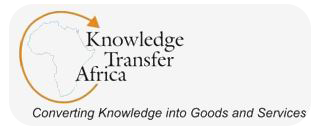African policy makers may see formalization of the informal sector as a panacea to economic development but what makes informality more attractive has not been adequately researched. Informal knowledge exchange is the order of the day in oral cultures where the bulk of the information and rules of engagement are not documented. For instance, a large portion of African economies has remained underground because there have not been efforts to generate a deep understanding of socio-economic, environmental and political drivers of those economies. The absence of systems for capturing knowledge, information and expertise partly explains why it has remained difficult to link the formal education system with Indigenous knowledge systems (IKS).

Connecting modern science with indigenous science
If knowledge capturing and management systems existed, content in formal education curricula would seamlessly speak to IKS. African grand mothers who have honed the art of translating raw food commodities into diverse diets and menus would be recognized as food science teachers and lecturers in formal education systems. That is one key avenue through which informality can a fundamental role in integrating IKS into food safety and entire food systems – opening new career paths for diverse graduates keen to study indigenous food systems.
Rather than condemning informality, what is needed is developing frameworks that foster knowledge co-creation between formal and informal sectors. African territorial markets have become strong platforms for such learning agendas but much of the knowledge exchange continues to be undocumented. Documentation will be a starting point in promoting the uptake of best practices between formal and informal sectors. Without a knowledge management framework, it remains difficult to unlock value from abundant natural resources. For instance, a lot of traditional and cultural livestock models need protection from colonial models that prioritize monoculture. Such protection requires the participation of elders who are the holders of IKS.
By recognizing IKS, policy makers can see the wisdom of entrusting wetlands and pastures in the hands of village heads and chiefs not make it a mandate of government departments like the environmental management agencies. Local traditional leaders have abundant knowledge on building resilient land and livestock management systems as well as several indigenous grazing models that have remained undocumented. Examples include letting cattle, goats and other livestock into fields to feast on crop residues after harvesting. Besides cattle depositing cow dung into the field that would later be incorporated into the soil, livestock hooves loosen the soil in ways that simplify planting of the next crops. Another indigenous community model is setting aside community grazing areas for the benefit of every household. Also prevalent in communal areas are private grazing models where each farmer sets aside pastures along contour ridges for draught power oxen and cows in milk to ensure maximum productivity from these livestock. Harvesting crop leftovers and storing at homesteads continues to be another livestock management model that has stood the test of time and deserve to be studied for informing modern livestock science.
Potential to propagate natural grasses
Integrating IKS with modern science can also spur investment in the propagation of natural grasses and forests for the benefit of domestic and wild animals. For example, a lot of natural grasses that naturally grow well around anthills and mountain ranges have not yet been researched for seed propagation. Much attention and investment continue to be directed at exotic grasses like lucerne, lab-lab and others being promoted at the expense of highly nutritious indigenous species. What stops African countries from developing plantations of indigenous grasses, trees and bushes that are favoured by livestock and indigenous mushrooms? Large tracts of land that have been abandoned by young people going to cities and mines can easily be converted into livestock ranches in which pensioners can invest their resources profitably. Livestock’s major attraction is that livestock models tend to be less labour- intensive when compared to crop farming which can be a tall order for old people. The same way community gardens are promoted can see livestock ranches being promoted in communities. A related initiative can focus on livestock breeding models rather than continue embracing imported models like Boer-goats and artificial insemination.
The power of packaging IKS and local expertise
Much can be achieved if each African country can set up an institution responsible for packaging IKS and community expertise. In the absence of such an institution, policy makers and local authorities are not able to adequately make sense of their ecosystems including what is in the mass market in terms of skills and expertise. Everything remains scattered yet it could be packaged to growth pathways. It is critical to know who is doing what, existing knowledge and missing knowledge that is required for growth beyond the status quo. Given the multiplicity of institutions and practices in most rural communities, how can knowledge and expertise be generated and utilized for community development? While the formal education system has curricula, what has made implementation of what is learned difficult is a chaotic ecosystem with different structures within the same community. Formal education becomes redundant in chaotic ecosystems as there are no clear pathways for applying it in the local communities. For instance, where can geography, history, commerce, mathematics and other subjects be applied at community level in an organized way? Besides being used in calculating change when buying and selling goods, there is nowhere where you find the complexities of mathematics being implemented in communities.
In most cases, there is no data that can, for instance, be used to develop social indicators for access to finance. In many African countries, information about informal lending is kept hidden because informal lenders are influential people like bankers and ministers who prefer preserving the status quo and do not want to be known to be operating informally. Such disinformation caused by the absence of accurate information makes it difficult to get a clear and accurate picture of the informal sector including its contribution to GDP.
Creatively bridging the gap between formality and informality will open avenues for connecting food supply and demand in more efficient ways that reduce losses. It will also assist in questioning the relevance of food fortification programs when many people do not consume what is fortified and prefer unprocessed indigenous food. Sometimes formalization is the only way for women, youth and marginalized groups to claim their space in a male-dominated economy. That is why taking a systems approach is critical. Mapping actors can show the role of actors who are outside the informal sector like banks and development agencies.
Charles@knowledgetransafrica.com / charles@emkambo.co.zw /
Website: www.emkambo.co.zw / www.knowledgetransafrica.com
Mobile: 0772 137 717/ 0774 430 309/0712737430
